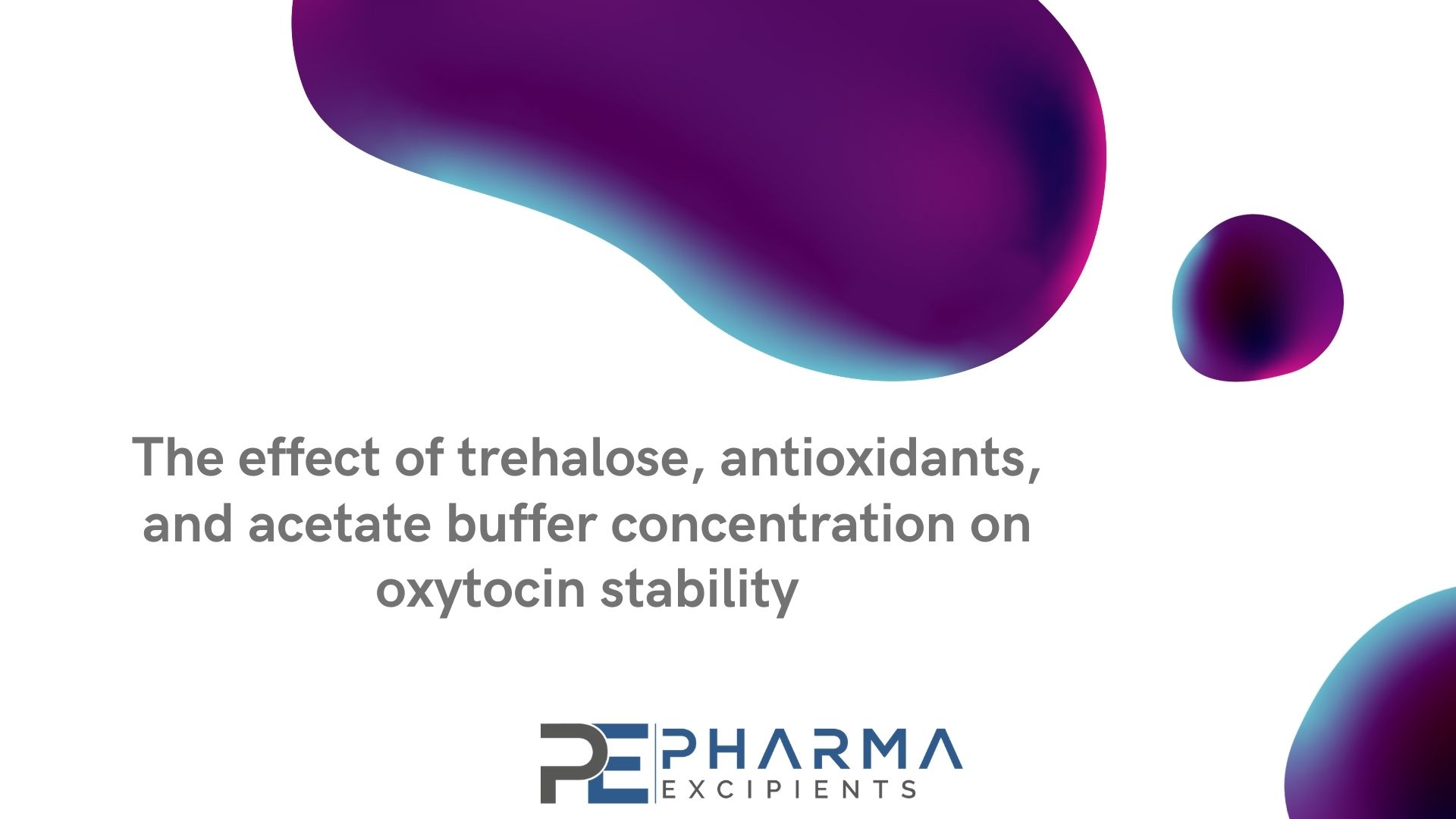The effect of trehalose, antioxidants, and acetate buffer concentration on oxytocin stability

Oxytocin is a cyclic nonapeptide used to induce labor and prevent bleeding after childbirth. Due to its instability, storage and transport of oxytocin formulations can be problematic in hot/tropical climates. The aim of this study was to investigate the effect of trehalose and select antioxidants (uric acid, butylated hydroxytoluene, and l‐ascorbic acid) on oxytocin stability in solution. The effect of buffer composition and acetate buffer concentration was also studied.
Acetate buffer was found to work better than citrate/phosphate buffer for the oxytocin stability. Lower acetate buffer concentrations (0.025 M or less) were also found to yield improved oxytocin stability compared to higher concentrations. Although known degradation pathways of oxytocin include oxidation, the antioxidants uric acid and butylated hydroxytoluene had negligible effect on the oxytocin stability while l‐ascorbic acid led to significantly faster degradation.
Despite trehalose’s reputation as a great stabilizer for biomolecules, it also had small to negligible effect on oxytocin stability at concentrations up to 1 M in acetate buffer. These results were surprising given the present literature on trehalose as a stabilizer for various biomolecules, including proteins and lipids.
Article information: , , . The effect of trehalose, antioxidants, and acetate buffer concentration on oxytocin stability. J Pep Sci. 2021;e3324. https://doi.org/10.1002/psc.3324

